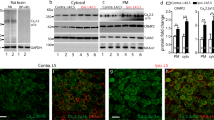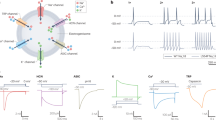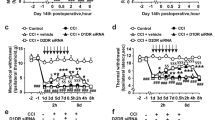Abstract
The relatively low expression levels achieved from transferred genes have limited the application of nonviral vectors for gene transfer into the spinal cord in vivo. Thus, the aim of this study was to evaluate the efficacy of electroporation-mediated pro-opiomelanocortin (POMC) gene therapy for neuropathic pain using an animal model of chronic constrictive injury (CCI). Firstly, the optimal pulse characteristics (voltage, pulse duration, number of shocks) were investigated for in vivo electroporation-mediated gene transfer into the spinal cord. The electroporation process makes use of plasmid DNA, which expresses the POMC gene. Expression levels were evaluated in this study by Western blot. We conclude that the optimal conditions for electroporation are a pulse voltage of 200 V, 75-ms duration, 925-ms interval, for five iterations. Secondly, electroporation treatment for neuropathic pain was attempted on CCI rats using plasmid DNA that expresses the POMC gene. Intrathecal administrations of the POMC vector elevated spinal beta-endorphin levels, as manifested in a significantly elevated pain threshold for the CCI limbs. This result suggests that gene therapy for neuropathic pain using this novel technique is very efficacious, and thus shows promise for further clinical trials.
This is a preview of subscription content, access via your institution
Access options
Subscribe to this journal
Receive 12 print issues and online access
$259.00 per year
only $21.58 per issue
Buy this article
- Purchase on Springer Link
- Instant access to full article PDF
Prices may be subject to local taxes which are calculated during checkout






Similar content being viewed by others
References
Yaksh TL . The spinal action of opioids
Neil A, Kayser V, Chen YL, Guilbaud G . Repeated low doses of morphine do not induce tolerance but increase the opioid antinociceptive effect in rats with a peripheral neuropathy Brain Res 1990 522: 140–143
Mack KJ, Killian A, Weyhenmeyer JA . Comparison of mu, delta, and kappa opiate binding sites in rat brain and spinal cord Life Sci 1984 34: 281–285
Atweh SF, Kuhar MJ . Autoradiographic localization of opiate receptors in rat brain, I spinal and lower medulla Brain Res 1977 124: 53–67
Morris BJ, Herz A . Distinct distribution of opioid receptor types in rat lumbar spinal cord Nauyn-Schmiedebergs Arch Pharmacol 1987 336: 240–243
Kitahata LM, Collins JG . Spinal action of narcotic analgesics Anesthesiology 1981 54: 153–163
Aimone LD, Yaksh TL . Opioid modulation of capsaicin-evoked release of substance P from rat spinal cord in vivo Peptides 1989 10: 1127–1131
Go VL, Yaksh TL . Release of substance P from the cat spinal cord J Physiol 1987 391: 141–167
Millan MJ . Multiple opioid systems and pain Pain 1986 27: 203–247
Seybold VS . Elde R.P. Receptor autoradiography in thoracic spinal cord: correlation of neurotransmitter binding sites with sympathoadrenal neurons J Neurosci 1984 4: 2533–2542
Olson GA, Olson RD, Kastin AJ . Endogenous opiates Peptides 1994 15: 1513–1516
Lyerly HK, DiMaio JM . Gene delivery systems in surgery Arch Surg 1993 128: 1197–1206
Mulligan RC . The basic science of gene therapy Science 1993 260: 926–932
Crystal RG . Transfer of genes to humans: early lessons and obstacles to success Science 1995 270: 404–410
Miller AD . Human gene therapy comes of age Nature 1992 357: 455–460
Weaver JC . Electroporation: a general phenomenon for manipulating cells and tissues Meth Mol Biol 1995 48: 3–28
Lasic DD, Papahadjopoulos D . Liposomes revisited Science 1995 267: 1275–1276
Matthews KE et al. Bead transfection: rapid and efficient gene transfer into marrow stromal and other adherent mammalian cells Exp Hematol 1993 21: 697–702
Chang DC, Gao PQ, Maxwell BL . High efficiency gene transfection by electroporation using a radio-frequency electric field Biochem Biophys Acta 1991 1092: 153–160
Weaver JC . Electroporation: a general phenomenon for manipulating cells and tissues J Cell Biochem 1993 51: 426–435
A-Mohammad S, Hawkins RE . Efficient transgene regulation from a single tetracycline-controlled positive feedback regulatory system Gene Therapy 1998 5: 76–84
Hermens WT, Verhaagen J . Viral vectors, tools for gene transfer in the nervous system Prog Neurob 1998 55: 399–432
Rivera VM et al. A humanized system for pharmacologic control for gene expression Nature Med 1996 2: 1028–1032
Saitoh Y et al. Dose dependent doxycycline-mediated adrenocorticotropic hormone secretion from encapsulated Tel-on pro-opiomelanocortin Neuro2A cells in the subarachnoid space Hum Gene Ther 1998 9: 997–1002
Inoue T et al. Role of cadherins in maintaining the compartment boundary between the cortex and striatum during development Development 2001 128: 561–569
Gould A, Itasaki N, Krumlauf R . Initiation of rhombomeric Hoxb4 expression requires induction by somites and a retinoid pathway Neuron 1998 21: 39–51
Bras JMA et al. Herpes simplex virus 1-mediated transfer of preproenkephalin A in rat dorsal root ganglia J Neurochem 1998 70: 1299–1303
Finegold AA, Mannes AJ, Iadarola MJ . A paracrine paradigm for in vivo gene therapy in the central nervous system: treatment of chronic pain Hum Gene Ther 1999 10: 1251–1257
Caudle RM et al. Spinal kappa-1 and kappa-2 opioid binding sites in rats, guinea pigs, monkeys, and humans NeuroReport 1998 9: 2523–2525
Ho J, Mannes AJ, Dubner R, Caudle RM . Putative kappa-2 opioid agonists are antihyperalgesia in a rat model of inflammation J Pharmacol Exp Ther 1998 281: 136–141
Huber AB, Ehrengruber MU, Schwab ME, Brosamle C . Adenoviral gene transfer to the injured spinal cord of the adult rat Eur J Neurosci 2000 12: 3437–3442
Finiels F et al. Properties of the putative epsilon opioid receptor: identification in rat, guinea pig, and chicken brain J Pharmacol Exp Ther 1993 264: 349–359
Zimmermann M . Ethical guidelines for investigations of experimental pain in conscious animals Pain 1983 16: 109–110
Lin CR et al. Electroporation for direct spinal gene transfer in rats Neurosci Lett 2002 317: 1–4
Hargreaves K et al. A new and sensitive method for measuring thermal nociception in cutaneous hyperalgesia Pain 1988 32: 77–88
Acknowledgements
Work was performed with the support of National Science Council NSC 88-2314-B-110-007.
Author information
Authors and Affiliations
Rights and permissions
About this article
Cite this article
Lin, CR., Yang, LC., Lee, TH. et al. Electroporation-mediated pain-killer gene therapy for mononeuropathic rats. Gene Ther 9, 1247–1253 (2002). https://doi.org/10.1038/sj.gt.3301790
Received:
Accepted:
Published:
Issue Date:
DOI: https://doi.org/10.1038/sj.gt.3301790
Keywords
This article is cited by
-
Peripheral Non-Viral MIDGE Vector-Driven Delivery of β-Endorphin in Inflammatory Pain
Molecular Pain (2009)
-
Intrathecal Injection of Naked Plasmid DNA Provides Long-term Expression of Secreted Proteins
Molecular Therapy (2009)
-
Intrathecal Long-Term Gene Expression by Self-Complementary Adeno-Associated Virus type 1 Suitable for Chronic Pain Studies in Rats
Molecular Pain (2006)
-
DNA electrotransfer: its principles and an updated review of its therapeutic applications
Gene Therapy (2004)
-
Regulated, electroporation-mediated delivery of pro-opiomelanocortin gene suppresses chronic constriction injury-induced neuropathic pain in rats
Gene Therapy (2004)



